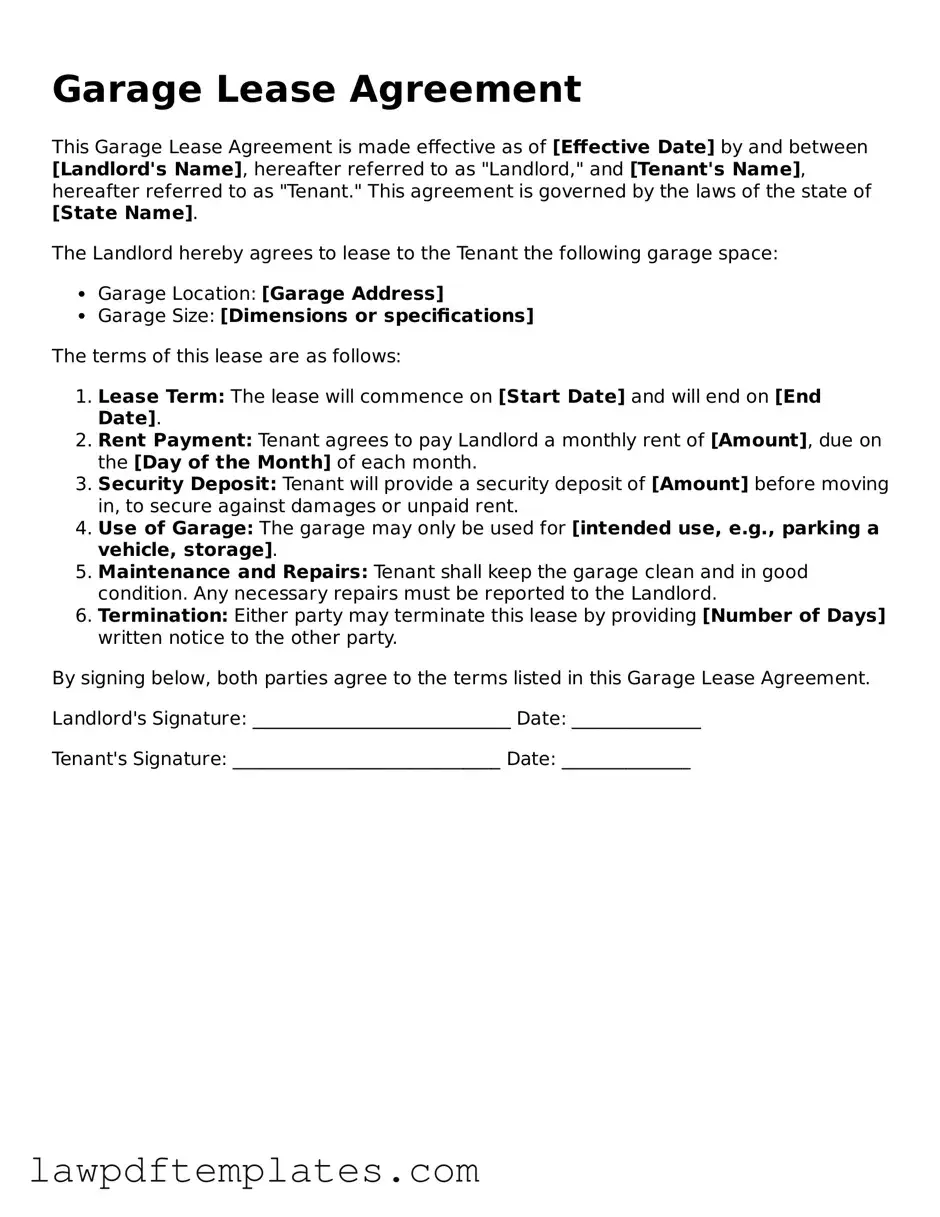Garage Lease Agreement
This Garage Lease Agreement is made effective as of [Effective Date] by and between [Landlord's Name], hereafter referred to as "Landlord," and [Tenant's Name], hereafter referred to as "Tenant." This agreement is governed by the laws of the state of [State Name].
The Landlord hereby agrees to lease to the Tenant the following garage space:
- Garage Location: [Garage Address]
- Garage Size: [Dimensions or specifications]
The terms of this lease are as follows:
- Lease Term: The lease will commence on [Start Date] and will end on [End Date].
- Rent Payment: Tenant agrees to pay Landlord a monthly rent of [Amount], due on the [Day of the Month] of each month.
- Security Deposit: Tenant will provide a security deposit of [Amount] before moving in, to secure against damages or unpaid rent.
- Use of Garage: The garage may only be used for [intended use, e.g., parking a vehicle, storage].
- Maintenance and Repairs: Tenant shall keep the garage clean and in good condition. Any necessary repairs must be reported to the Landlord.
- Termination: Either party may terminate this lease by providing [Number of Days] written notice to the other party.
By signing below, both parties agree to the terms listed in this Garage Lease Agreement.
Landlord's Signature: ____________________________ Date: ______________
Tenant's Signature: _____________________________ Date: ______________
